Concluding the repair, where wallpaper is well -prepared on a well -prepared surface ...
|
|
An open balcony is not just an additional area at the turn of the apartment and streets, ... |
Among the numerous options for decorating ceilings, stretch structures differ ... |
Installation of lighthouses for floor screed

Lighthouses for screeding the floor are an important and necessary measure when laying the surface. When performing floor laying work, irregularities of the surface are necessarily detected, which must be eliminated by screed. Most often, a mixture of sand and cement is used for this purpose, but in order for it to lie evenly, special devices are needed, which indicate the deviation from the surface level in different angles of the room. Lighthouses act as these devices. Installation of lighthouses for floor screed is carried out in a variety of ways. It all depends on the technology of floor laying, used and affordable materials. Below are described all methods of making lighthouses, how they are constructed and in what cases they are used.
Table of contents:
- Lighthouses for screeding coatings from concrete or cement-sand mixture
- Lighthouses for bulk floors
- Lighthouses for dry floor screed
- Lighthouses for a wooden floor
- Determination of the zero level for floor screed
Lighthouses for screeding coatings from concrete or cement-sand mixture
To determine the level of space for flooring with concrete or cement and sand, several varieties of beacons are used. The material in each option is:
- Wooden rails or bars.
- Metal metal profiles.
- Metal profiles for working with drywall.
- Pipe from steel.
- Solution.
- Slides from the solution.
More details for each type:
- Lighthouses made of wooden rails or bars. This is an obsolete level of marking the level that few people use in construction now. The main material, which directs the entire structure, is a beam made of wood with a width of at least 3 cm. To adjust the level of lighthouses, they use wedges made of wood, lining of various materials, or screws. Manually in one way or another, the height of the beams changes, which will correspond to the smooth level of the surface. Before installation, the beam is well soaked in water so that it does not affect the solution. The beacons are poured with a solution, after its drying they are removed, and the remaining gaps are poured with concrete. The level is regulated by dry solution.
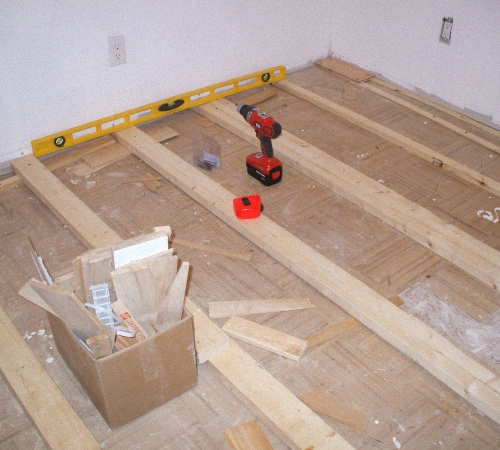
- Lighthouses from metal plaster profiles. They are used much more often in modern construction. Optimally suitable for laying the surface of a small area. Such lighthouses for screeding the floor are not difficult to determine the line along which the guides will be located, self -tapping screws are screwed along its entire length. The height of the beacons is regulated by screwing and twisting the bolts.
- When installing screws, their level is regulated using a strong thread or fishing line, which is stretched between them around the length. The level is regulated under zero, then along the stretch is made of a line from small piles of solution. The mixture for this purpose is made of sand and cement, often a little alabaster is added to it to speed up the hardening process. In some cases, not a solution is used in some cases, but special mixtures for plaster. However, practicing builders advise to use the same solution for signal slides from which the screed will be poured, the floor will be more durable and reliable.
- Directors are installed on the line from the piles of the solution, which are made of a metal plaster profile. If necessary, the profile is slightly pressed into the heaps, the level is monitored along the stretched thread. When working with a metal profile, handle it very carefully with it, especially during manipulations, including mechanical effects on the profile. This material is subject to deformations, it is easily bending and breaking. It is advisable to use lighthouses from a metal profile if the thickness of the screed does not exceed 2-3 cm. Since the thicker layer of cement trim the profile and will make all the work useless.
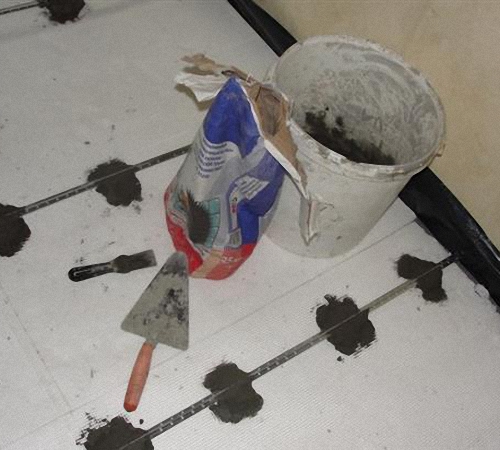
- Lighthouses from a metal profile for work with drywall. There are also fairly common beacons for floor screed. The technology of their laying is such that the profile is only put up with the base, since it has the shape of the letter P. at the beginning of the work, the self-tapping screws are mounted, the gap between them is 40-50 cm. The size of the material is selected so that when screwing the screw into the dowel, it enters Half and more. On the perimeter of the walls, the screws are set to the zero level, adjusting this indicator with a larger or smaller level of screwing. They pull the thread and, focusing on it, install the profile on screws. The zero level is regulated along the entire length of the lighthouses. This is also done by changing the level of screwing screws.
- The level checks the correctness of the horizontal plane of profiles and the space between them. It is convinced that all lines are exhibited correctly, and begin to lay the solution. A small amount of it is placed under the profiles in those places where they rest on self -tapping screws. Again, check the correctness of all horizontals. If the indicators are correct, then the beacons are laid on two sides with a solution. Leave until completely dry, and then the floor is screed. Self -tapping screws are sometimes replaced with wood bars, bricks or slides of solution. The replacement will not affect the quality of the screed.

- Lighthouses from steel pipes. This method of flooring is used for screeding a large area with a large mass of the screed itself. Pipes are optimally suitable for such conditions, since they are practically not subject to deformation and are very strong. Pipes of any section are used circle, rectangle or square.
- At the beginning of the work, the zero surface level is determined. Further, the thread is pulled along the entire surface. In the points planned for lighthouses, heaps are laid out of the solution. They are located strictly in a straight line. Further, pipes are installed on these slides, which are slightly pressed into the solution, to give them greater stability. The construction level is checked by the correct location of the pipes in the horizontal plane. If the pipe lies below the desired level, then a small amount of solution is placed under it, if higher, then pressed into the hill.
- After installing all the pipes and determining the correctness of their location in space, they are fixed with a solution from all sides and left to dry. When the solution dries on the beacons, the floor is poured completely. After the floor dries, the pipes are extracted from the solution, the holes are sealed.
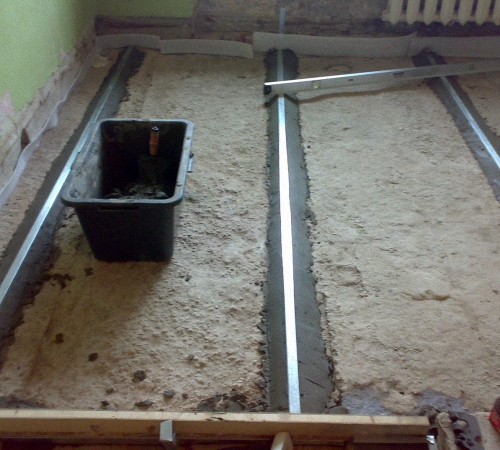
- Lighthouses from the solution. This option is convenient in that after performing all the work, the signal structures do not need to be removed. The screed in this way at the same distance to the surface is mounted self -tapping screws, a wire or thread in several layers is pulled through them. Next, focusing on this stretch, lay out the solution so that a small wall forms. Its spatial location is erupted to form an impromptu guide rail.
- This work is performed using the rule that move along the stretched thread, touching self -tapping screws. The wall built in this way from the solution, or rather its upper part, perform the function of the lighthouse, which is then filled with a solution, performing a screed. Such beacons for screeding the floor have a small cost, since during operation, third -party materials are not used, only the screed solution itself.
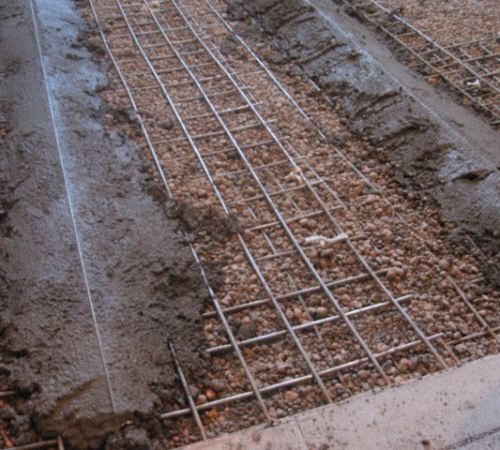
- Slides from the solution as beacons. This method is suitable for a semi -dry screed, which is superimposed with a thick layer. In each corner of the room, a slide of the solution is applied, the height of which is regulated in accordance with the zero point. The distance between each hill is left so that the length between them does not exceed the length of the rule. The slides adjusted in terms of the level are left to dry, after which they perform a screed. When laying the solution on the slides, put a rule and regulate the level of laying the solution.
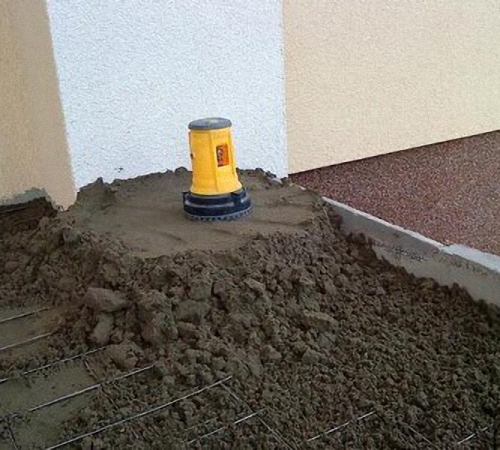
Lighthouses for bulk floors
For lighthouses for floor screed, the price varies depending on the type of material used. This also applies to the arrangement of bulk floors. Despite the fact that the bulk floors themselves are distributed over the surface, filling the hollows and forming an even surface, they need to install lighthouses of a special type. The main varieties are distinguished by two:
- Lighthouses on tripods, ranges. Demonstrates the ladies for screeding the floor above. This is a small design with three legs, which has a rod in the center. It is this central detail that changes its position in space up and down, indicating the zero level. The equipment is professional, several pieces are used for one room.
- The preparatory work on the arrangement of the bulk floor includes the priming of the surface. The primer is left for 5-6 hours, and then the beacons are placed over the entire surface. The distance between them leave about 1 m, the hats on the rod help to set the necessary surface level.

- Self -tapping screws as lighthouses. Since tripods are professional equipment and their acquisition to perform with your own hands requires additional costs, homemade beacons are used for filing floor, which are made from self -tapping screws. The principle of use is the same as already described above. The bolts are screwed into the floor, aligned with the rule, and then pull the thread, according to which they are oriented when pouring the floor.
Lighthouses for dry floor screed
To adjust the surface of the dry screed, the best choice is the profiles for drywall. Their dimensions are selected within no less than 27 mm in height, because the thickness of the dry screed is about 30 mm. A more durable design will make a profile in size 60 by 27 mm.
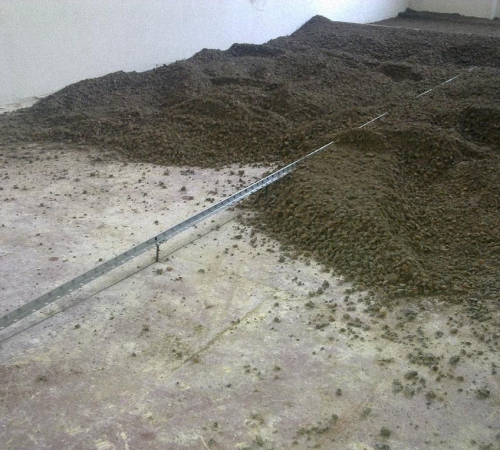
On the surface, the profile is laid up with sharp corners, the distance from the edge to the edge is filled with material, as well as the distance from one guide to another. The rule is placed on the profile by which its level is regulated. To do this, either excess solution from under the lighthouse are removed, or a little necessary amount is poured. In a dry screed, beacons are not taken out after all work. So experts advise to do. However, there is an opinion that the left profile will reduce the strength of the screed, as it will begin to rust and lose its strength. This problem is solved by using a stainless steel profile or with an anti -corrosion coating.
Lighthouses for a wooden floor
The technology for installing lighthouses for a wooden floor is radically different from others. As lighthouses, wooden lags of wood bars, which are installed in zero level, act here. At the beginning of the work, screws are screwed into the surface so that their lines form a square with sides of 30 cm. All lines are adjusted in a horizontal plane, and then lags are laid.
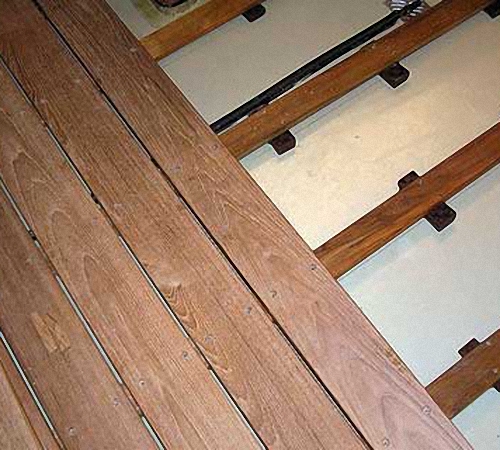
Determination of the zero level for floor screed
The quality of all work performed depends on the correct determination of the zero level. Therefore, this process must be studied and performed in all details. The level is determined as follows:
- On the basis, the vertical overlap closest to this point is taken. 1 m retreat from it and mark the first point.
- Using the construction level, draw a base line on the entire surface.
- The height from the drawn line to the floor surface is measured. The points that are below the first are determined. Among them, the lowest and highest and the highest is distinguished and noted.
- The highest point has the minimum deviation from the basic indicator.
- A zero level is carried out through this point, and then it is raised by 3 cm above the highest point.
- Carrying out all these works, ensure that the smallest thickness of the screed in different places of the room is 3 cm.
Be sure to check the presence of the highest point in the center of the room. To get this data, the thread is pulled along the width of the room and check the surface along its entire length. If the elevation was discovered, then the zero level is carried out with it. In the event that this elevation does not have a very large size relative to the entire room, it is recommended to simply remove it.
In more detail about how to carry out work, will tell the video posted below. The floor screed through the lighthouses allows you to facilitate the entire process of filling the floor and make it more accurate.

Enough informative
Enough informative material!